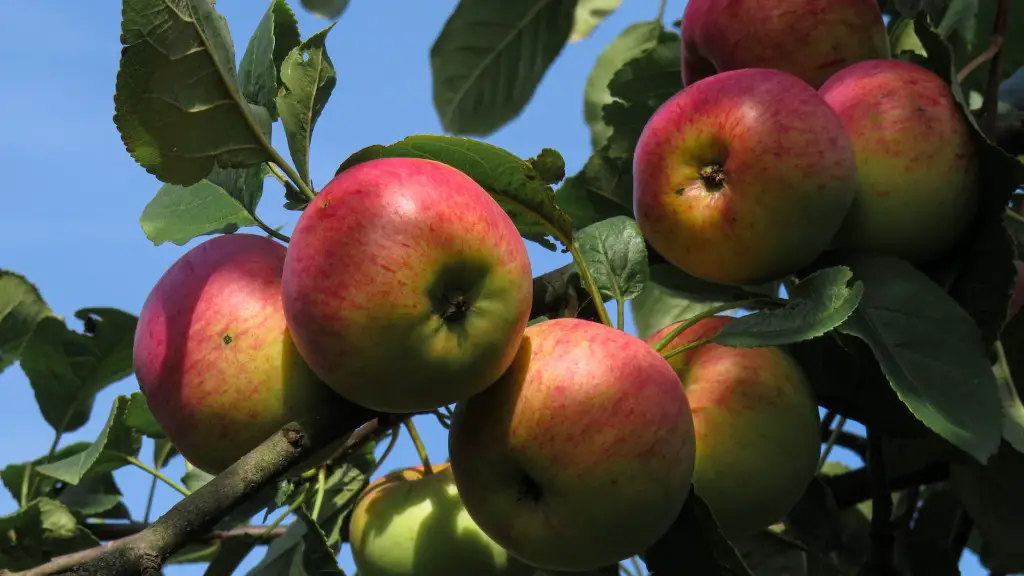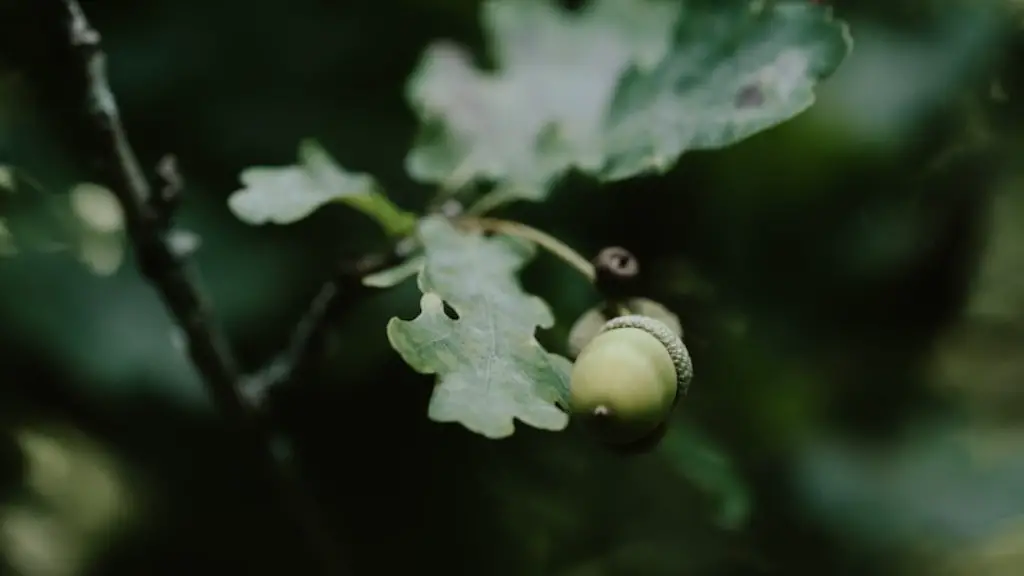Background Information and Perspective from Experts
Avocado trees (Persea americana) are an attractive and fast-growing evergreen that can be grown indoors or outdoors in areas with warm, humid climates. While outdoor sets provide the largest yield and are generally easier to maintain, it is possible to grow a healthy avocado tree in a container indoors. This can be achieved by carefully nurturing a seed into a sapling, then potting and tending to it correctly. Here’s what to know about how to grow an avocado tree from a seed indoors:
Eckie Prinsloo, owner of Prinsloo’s Avocado Farm in South Africa, explains that the process of growing an avocado tree from a seed is both a science and an art. “Growing an avocado tree from a seed indoors is a much more involved process than simply planting a seed outside,” he said. “You need to have patience and make sure to offer your tree adequate nutrition and water.”
Elaina Rodriguez, a horticulture graduate from the University of Oregon, concurs. “The trick to growing an avocado tree indoors is to mimic its natural environment before potting it,” she explains. “You’ll need to get the right soil, potting container, light intensity and watering regularity so your tree can thrive.”
Gathering the Supplies
The first step in growing an avocado tree from a seed indoors is to gather the necessary supplies. This includes a healthy avocado seed, a potting container, well-draining potting soil, a heat source to warm the soil, and growing lights to provide adequate lighting.
Be sure to select a new, clean container for your avocado seed. Prinsloo recommends a container with a hole in the bottom, preferably around 6 to 8 inches in diameter. He advises using a potting soil specifically made for indoor trees and plants, as it supports root growth and drainage. And to prevent overheating, Prinsloo recommends using a heating mat designed to warm the soil, as well as a fan to provide a gentle breeze.
Once you’ve gathered all the necessary supplies, it’s time to plant the avocado seed.
Planting the Seed
The next step is to suspend the avocado seed in the potting container. To do this, Prinsloo suggests inserting four skewers around the avocado seed, then wrapping them with cloth or cotton string. This will secure the seed in place as it grows.
When the avocado seed is in place, fill the potting container with the pre-moistened potting soil. Prinsloo advises burying the seed up to its shoulders and marking the soil line to prevent accidental uprooting.
Rodriguez also encourages adding a bit of compost or worm castings to the soil to provide additional nutrition. “It’s important to provide the right kind of nourishment,” she said. “Worm castings are a great way to ensure your plant is getting the nutrients it needs without having to use chemical fertilizers.”
Once the seed is planted, it’s important to maintain a consistent watering schedule. Prinsloo suggests watering your sapling every 10 to 14 days, depending on the climate and the season, to ensure your tree receives enough moisture.
Providing Adequate Lighting
In order for an avocado tree to thrive, it must have enough light. Prinsloo explains that a good solution to this is to purchase a high-quality LED grow light.
“An LED grow light is essential for a healthy, growing avocado tree,” Prinsloo says. “LEDs emit a broader spectrum of light, and some even offer adjustable intensity settings. This means you can customize the light intensity for your tree’s specific needs and provide an environment that is suitable for its growth.”
Rodriguez also suggests using a timer to ensure the tree gets enough artificial daylight hours each day. She recommends setting the timer to mimic natural daylight hours, so your tree can get 12 to 16 hours of light per day.
Maintaining a Warm Environment
As with artificial light, Prinsloo also suggests using a heat source to maintain a warm environment around your tree. “Avocado trees prefer a warm and humid climate, so it’s important to ensure that your tree is kept in an indoor environment with temperatures of at least 70 to 80 degrees Fahrenheit,” he said.
To keep the temperature from fluctuating too much, Prinsloo recommends using a thermostat-controlled fan. This will help to maintain a stable temperature range and protect the tree from cold drafts and abrupt changes in the climate.
You’ll also want to take care to keep your tree free from pests and other diseases. Rodriguez advises checking for pests and diseases every few weeks and treating any signs of infestation or infection with an appropriate insecticide or fungicide.
Fostering Fast Growth
Once planted, an avocado tree can typically grow to 4 or 5 feet tall in two to three years. Prinsloo recommends regularly trimming the tree with pruning shears or scissors to promote faster growth. He suggests pruning once or twice a year to help the tree reach its mature size.
Rodriguez also suggests fertilizing your tree with a balanced nitrogen-based fertilizer two or three times a year. The fertilizer should be applied to the soil following the manufacturer’s instructions.
In addition, Rodriguez suggests using an all-purpose fertilizer to provide additional nutrients, such as phosphorous, magnesium, and calcium. She recommends mixing the fertilizer into the soil and then providing the tree with adequate water to promote faster growth and fuller leaves.
Offering the Right Temperature
Although a warm climate is ideal for most avocado trees, it’s important to provide the tree with cooler temperatures at night. Prinsloo advises keeping a consistent night/day temperature ratio of 65/85 degrees Fahrenheit to ensure the tree thrives.
Rodriguez also recommends providing a high humidity level for your avocado seedling. She suggests misting the potting soil daily with a spray bottle or using a room humidifier.
Benefits of Pruning and Feeding
Finally, Prinsloo insists that regularly pruning the tree and applying balanced fertilizer will be key to producing a healthy, “drought and disease-resistant tree” over time.
“Pruning and feeding are essential for a successful avocado tree,” Prinsloo says. “They will help the tree grow faster and fuller, and reduce the risk of disease and pests.”
Rodriguez echoes Prinsloo’s sentiments. She believes that proper pruning and feeding will give the tree the best chance for success. “These two steps help ensure your tree will produce lots of avocados,” Rodriguez said. “It may take a few years, but the reward will be worth it.”
Patching Root Rot
Root rot is a common issue among avocados, often appearing in moist or humid environments. If your tree shows signs of root rot, Prinsloo recommends removing the affected roots with a trowel and using a fungicide to prevent future infestations.
Rodriguez adds that, to avoid root rot, it’s important to keep an eye on the temperature and humidity of the soil. “Make sure the soil is not too wet and the temperature is not too high as this can create an environment conducive to root rot,” she cautions.
Encouraging Vigorous Growth
Once your avocado tree is established and healthy, it’s important to encourage its rapid growth by providing it with plenty of nourishment and light. Prinsloo suggests fertilizing the soil with an all-purpose organic fertilizer to ensure the tree is receiving adequate nutrition.
Rodriguez also recommends providing the tree with 12 to 16 hours of light each day. She believes that this will help the tree to quickly reach its maximum height and produce larger, more mature fruits.
Monitoring Pests and Diseases
Unfortunately, avocado trees can also become subject to pests and diseases if they are not carefully monitored. Prinsloo advises regularly inspecting the tree for signs of infestation or infection and taking immediate action in the event of an outbreak.
He suggests using insecticides or fungicides to treat any affected areas of the tree. Rodriguez believes that the use of natural remedies, such as neem oil and garlic, may also be effective in controlling pest populations.
Protecting from Soil-dwelling Predators
In addition to monitoring for pests and diseases, it’s important to take measures to protect your avocado tree from soil-dwelling predators such as nematodes. Prinsloo suggests planting marigolds or other flowering plants near the base of the tree as a natural form of pest control.
Rodriguez also suggests mixing the soil with beneficial nematodes, which are microscopic worms that feed on pests and disease-causing organisms. She believes that this will help to naturally control soil-dwelling predators and protect your tree from harm.


